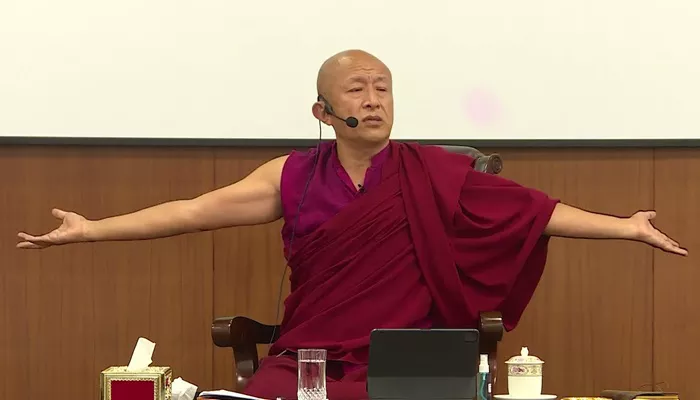Buddhism is one of the world’s oldest religions. It started with the teachings of Siddhartha Gautama, known as the Buddha, over 2,500 years ago in India. Over time, Buddhism grew and changed in different ways. Two main branches formed: Theravada and Mahayana. Understanding when and how these two branches split helps us see the history of Buddhism more clearly.
What Are Theravada and Mahayana Buddhism?
Theravada Buddhism Meaning and Origin
Theravada Buddhism is often called the “Teaching of the Elders” or “School of the Elders.” It focuses closely on the original teachings of the Buddha. Theravada emphasizes personal enlightenment through study, meditation, and ethical living. It is most common in countries like Sri Lanka, Thailand, Myanmar, Laos, and Cambodia.
Mahayana Buddhism Explained
Mahayana Buddhism means the “Great Vehicle.” It developed later and spread mainly to China, Korea, Japan, and Tibet. Mahayana Buddhism teaches not only personal enlightenment but also helping all beings reach enlightenment. It introduces the idea of the Bodhisattva, someone who delays their own final liberation to help others.
Historical Background: Early Buddhist Councils
After the Buddha’s Passing
The Buddha passed away around the 5th century BCE. Soon after, his followers gathered in councils to preserve his teachings. The First Buddhist Council was held shortly after his death. It aimed to record the Buddha’s words exactly.
Early Divisions in Buddhism
After the First Council, differences in interpretation began to appear. These led to the formation of different schools of Buddhism. These early divisions were mostly about monastic rules and the exact teachings, not yet about the big split into Theravada and Mahayana.
When Did the Theravada and Mahayana Split Occur?
The Early Schisms
The main split between the Theravada and Mahayana traditions happened several centuries after the Buddha’s death. The exact date is hard to pinpoint, but scholars generally agree that Theravada emerged from the ancient school called the Sthavira (Elders) sect. This happened around the 3rd century BCE during or after the Third Buddhist Council.
Emergence of Mahayana Buddhism
Mahayana Buddhism began to develop between the 1st century BCE and the 1st century CE. It started as a movement within existing Buddhist communities, introducing new texts called Mahayana sutras and new ideas about compassion and enlightenment. Over time, Mahayana became a distinct tradition with its own philosophy and practices.
Key Differences in Teachings and Practice
Theravada’s Focus
Theravada Buddhism focuses on the earliest scriptures, mainly the Pali Canon. It teaches the path of the Arhat, a person who seeks to reach Nirvana and end the cycle of birth and death. Meditation and strict monastic discipline are very important.
Mahayana’s New Teachings
Mahayana Buddhism adds new sutras that the early schools did not accept. It highlights the Bodhisattva ideal—working to help all beings rather than just seeking personal liberation. It also introduces new philosophical ideas such as emptiness (śūnyatā) and Buddha-nature.
Geographical and Cultural Spread
Where Theravada Thrived
Theravada spread mainly in South and Southeast Asia. It became the dominant form of Buddhism in Sri Lanka and later in Thailand, Myanmar, Laos, and Cambodia. It stayed closer to the original teachings and scriptures.
Mahayana’s Expansion
Mahayana Buddhism grew more in East Asia. It influenced the development of Chinese Buddhism, Korean Buddhism, Japanese Buddhism, and Tibetan Buddhism (which also mixed in Vajrayana elements). This branch was more open to adapting local customs and ideas.
Why Did the Split Happen?
Differences in Texts and Interpretation
One major reason was disagreement over which Buddhist texts were authoritative. Theravada accepts only the oldest texts in the Pali language, while Mahayana added many new sutras in Sanskrit.
Diverging Philosophies
Philosophically, Mahayana introduced more universal and expansive ideas about enlightenment and compassion. This did not always sit well with Theravada monks who focused on individual liberation.
Social and Cultural Factors
As Buddhism spread into new regions, cultural and social differences helped shape the traditions differently. Mahayana adapted to Chinese and Tibetan cultures, incorporating local gods and ideas, which was less common in Theravada countries.
Impact of the Split on Buddhism Today
Theravada Buddhism in the Modern World
Today, Theravada remains strong in Southeast Asia. It has also gained followers worldwide, especially with interest in mindfulness meditation.
Mahayana Buddhism’s Global Reach
Mahayana is practiced by millions across East Asia and has many diverse schools like Zen, Pure Land, and Tibetan Buddhism. It continues to grow in popularity globally.
Conclusion
The split between Theravada and Mahayana Buddhism happened gradually over centuries, roughly starting after the 3rd century BCE and becoming clearer by the 1st century CE. It was caused by differences in texts, interpretation, and cultural adaptation. Both traditions preserve the Buddha’s teachings but focus on different paths and ideals. Understanding this history helps us appreciate the rich diversity within Buddhism today.

